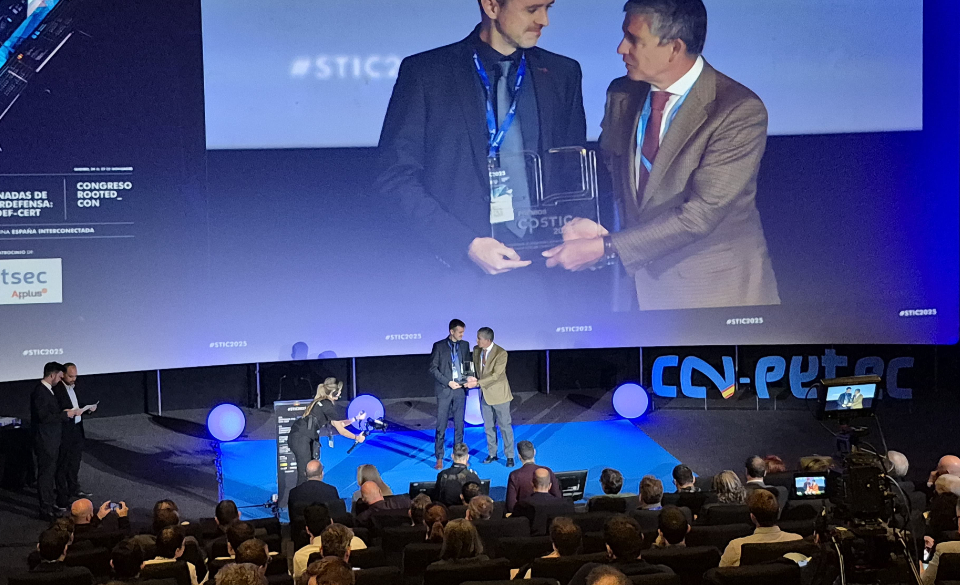
What is a DDoS? Technical guide
18 de September de 2025
A new paradigm for Endpoint security: secure work environments with Endurance and Ranger
2 de October de 2025In the corporate cybersecurity landscape, the most visible attacks often grab the spotlight: ransomware that paralyzes systems, DDoS that takes down critical services, or massive phishing campaigns. However, there is a far more insidious, silent, and difficult-to-detect type of attack: Data Exfiltration, also known as data leakage.
It is defined as the process by which an attacker extracts sensitive or critical information from a corporate environment and sends it to an external system under their control, without being detected by the organization’s conventional defenses. This attack is especially dangerous because its primary goal is not to damage infrastructure but to steal the most valuable asset of a company: its data.
Actors that employ Data Exfiltration are diverse: from industrial espionage groups and APTs (Advanced Persistent Threats), to malicious insiders, to cybercriminals looking to monetize stolen information. The sophistication of these attacks lies in their ability to hide within legitimate traffic, using valid credentials and common protocols, making many traditional security solutions insufficient for detection.
Types of Data Exfiltration: vectors and techniques
To understand the severity of this threat, it is necessary to analyze the main methods attackers use to remove data from a corporate network. Each vector has its own characteristics and risks.
1. Network-based exfiltration
This is the most common vector used by APT groups and sophisticated attackers.
- How it works: After consolidating sensitive information, attackers send it to external servers or command-and-control (C2) infrastructure using standard company protocols such as HTTP, HTTPS, FTP, SFTP, or even DNS.
- Evasion techniques: Data is often fragmented into small packets to avoid traffic spikes. Additionally, traffic is mostly encrypted, preventing content inspection without advanced TLS inspection tools.
- Real examples: The group APT29, associated with government espionage campaigns, has used DNS tunnels to exfiltrate Active Directory credentials without triggering firewall or IDS alerts.
- Key takeaway: Network exfiltration shows professionals that controlling communication channels is not enough. Deep inspection, network segmentation, and behavioral monitoring are necessary.
2. Physical exfiltration
Sometimes the attacker has physical access to facilities and opts for direct methods:
- How it works: Data is copied to storage devices such as USB drives, external hard drives, or even personal smartphones.
- Risks: In environments without port controls or device usage policies, information can be removed in seconds without generating network logs.
- Real case: Hospitals that suffered medical record leaks via uncontrolled USB drives, exposing data from hundreds of patients.
Key takeaway: Physical exfiltration proves that security must be holistic, not just digital: physical access policies and endpoint controls are essential.
3. Cloud Exfiltration
The use of cloud storage services is a modern and growing vector:
- How it works: Attackers upload sensitive data to accounts on Dropbox, Google Drive, OneDrive, or other services, often using compromised credentials.
- Why it’s difficult to control: HTTPS traffic to the cloud is usually allowed, and distinguishing legitimate from malicious use is not always clear.
- Additional risk: Even legitimate employees can cause data leakage unintentionally (shadow IT), complicating detection.
Key takeaway: Cloud risks highlight the need for data governance policies and access monitoring, as well as tools that centralize control over sensitive information.
4. Email or messaging exfiltration
Corporate email remains an effective vector for data leakage:
- How it works: Attackers attach data to emails sent to external accounts, or use encrypted messaging services (Signal, Telegram, WhatsApp) to transfer it.
- Risks: Detection requires content inspection and data classification, as legitimate emails may contain similar files.
- Key takeaway: Incidents in financial companies where strategic documents were sent to external accounts through corporate email services without triggering alerts.
5. Covert Channel Exfiltration
Advanced techniques aim to evade any conventional control:
- How it works: Attackers hide information within other files using steganography, or use protocols such as ICMP, DNS, or even ultrasound and radiofrequency to transmit small fragments of data.
- Critical context: Even in air-gapped networks, cases have been documented where exfiltration occurred via electromagnetic signals from compromised devices.
- Key takeaway: These techniques show that security must follow a defense-in-depth approach, combining access controls, advanced monitoring, and data isolation.
Phases of a data exfiltration attack
For security professionals, it is essential to understand the kill chain of such attacks:
- Internal reconnaissance: The attacker identifies where critical data is located (databases, code repositories, SCADA systems, or email inboxes).
- Privilege escalation: Gains high-level accounts through vulnerability exploitation, hash theft, or abuse of service accounts.
- Data aggregation (staging): Consolidates data in a single point for easier extraction without raising suspicion.
- Preparation for exfiltration: Compresses, encrypts, and fragments data to make it harder to detect.
- Exfiltration: Sends the data outside the network using one of the mentioned vectors (network, cloud, email, covert channels).
- Covering tracks: Cleans logs and removes traces to hinder detection and forensic investigation.
Example: In an industrial setting, an attacker compromising a SCADA system may first steal operator credentials, then download PLC configurations, and finally attempt to send them via FTP to an external server. Without proper access point controls, the exfiltration may succeed undetected.
Impact of a successful attack
The consequences of a data exfiltration can be devastating and multidimensional:
- Economic: loss of intellectual property, decreased competitiveness, and potential compensation to clients or partners.
- Reputational: erosion of trust from customers, partners, and investors.
- Legal: penalties for non-compliance with GDPR, NIS2, and industry regulations.
- Operational: in industrial environments, theft of PLC or valve configurations may enable physical sabotage, creating safety risks and production downtime.
According to the IBM Cost of a Data Breach Report 2024, the average cost of a data breach is $4.45 million, and the average detection time is 204 days, showing that most exfiltrations are completed long before being identified.
Endurance redefines access to critical assets
Against such a sophisticated and silent type of attack, traditional defenses are insufficient. Firewalls, EDR, and endpoint DLPs are important, but they cannot prevent an attacker with legitimate credentials and authorized access from consolidating and exfiltrating information from critical systems.
The solution lies in redesigning the access point to critical assets, controlling where, how, and with what privileges users interact with sensitive information and essential systems.
This is where Endurance, a Remote Shielded Workspace (RSW), comes in. This approach transforms the concept of security:
- Total isolation: Data is never downloaded or copied to the user’s endpoint. Even if the device is compromised, sensitive information remains in a secure, centralized environment.
- Dynamic credential management: Passwords and access are injected temporarily and rotated; users never know the credentials, preventing reuse or theft.
- Continuous monitoring: Every command, click, or file transfer attempt is tracked and recorded, generating complete forensic evidence.
- Granular operation control: Copying, printing, downloading, or sending information is blocked or requires approval.
- Real-time data inspection: Any attempt to move sensitive data outside the RSW is automatically blocked.
In summary: Endurance redesigns access to critical assets, turning each session into a secure enclave where attackers cannot consolidate, move, or extract valuable information. Each connection becomes a sheltered security perimeter, auditable and controlled by the organization, not by the attacker.
This approach marks a paradigm shift in Data Exfiltration protection: security no longer stops at preventing intrusion, but ensures that even a legitimate user cannot steal sensitive information.




